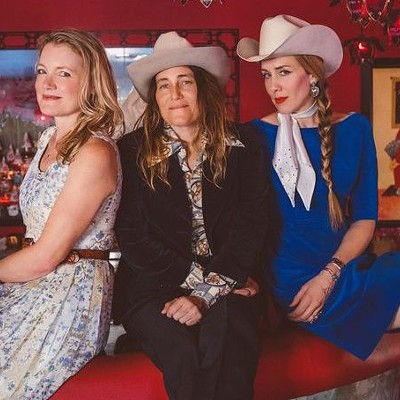Support Us
Houston's independent source of
local news and culture
account
- Welcome,
Insider - Login
- My Account
- My Newsletters
- Contribute
- Contact Us
- Sign out
[
{
"name": "Related Stories / Support Us Combo",
"component": "11591218",
"insertPoint": "4",
"requiredCountToDisplay": "4"
},{
"name": "Air - Billboard - Inline Content",
"component": "11591214",
"insertPoint": "2/3",
"requiredCountToDisplay": "7"
},{
"name": "R1 - Beta - Mobile Only",
"component": "12287027",
"insertPoint": "8",
"requiredCountToDisplay": "8"
},{
"name": "Air - MediumRectangle - Inline Content - Mobile Display Size 2",
"component": "11591215",
"insertPoint": "12",
"requiredCountToDisplay": "12"
},{
"name": "Air - MediumRectangle - Inline Content - Mobile Display Size 2",
"component": "11591215",
"insertPoint": "4th",
"startingPoint": "16",
"requiredCountToDisplay": "12"
}
,{
"name": "RevContent - In Article",
"component": "12527128",
"insertPoint": "3/5",
"requiredCountToDisplay": "5"
}
]
Often, early rock and roll artists were tied to a certain geographical area, becoming something of unofficial (and unelected) city representatives. Elvis meant Memphis. Buddy Holly was Lubbock. Little Richard preened and screamed in Macon. And Jerry Lee was solid, swampy Ferriday.
But the boroughs of New York City – and more specifically, the Bronx – were the undisputed turf of that son of Italy, Dion DiMucci. The singer/guitarist had an enviable multitude of hits from the late ‘50s to mid ‘60s both with his vocal group, the Belmonts (named for an actual Bronx street that members lived on or near) and as a solo artist.
The Rock and Roll Hall of Famer (class of ’89) still can’t get the Big Apple off his brain, and the result is the new record New York Is My Home (Instant Records).
Its ten songs – mostly co-written by Dion – are like a sonic postcard of his experiences in the city both past and present, steeped in rock and blues. And the warm and tribute-laden title track (and video) is a duet with his longtime friend, another New Yorker (via Queens) by the name of Paul Simon.
“This is a love song to the city of my birth. And my girl,” Dion explains of the tune.
“And for me, ‘God’s Country’ is never going to mean canyons and forests," he continues. "It’s going to have sirens and subways and crowds and different ethnic groups on every corner. I mean, it’s New York. It’s the center of the universe!”
Of his backing band for the project, the heavy lifting on guitar and keyboards is done by Jimmy Vivino. The well-known NY session man’s day job is leading the band for Conan O’Brien’s talk show. And the boss was impressed.
"I was in a very creative place, and the songs just kept on coming. Jimmy heard them, and wanted to do the album with me," Dion recalls. “His guitar playing captures the heart of the intention of the original blues artists. There’s a lot of tradition behind it, like on [the track] ‘Aces Up My Sleeve.’ He just took off into the stratosphere!"
Dion adds that songs like “The Apollo King” and “I’m Your Gangster of Love” are based on real-life characters he encountered in his youth at the fabled Harlem music venue the Apollo Theatre (where he saw many shows) and a local Mafioso club named George’s, respectively.
Despite his doo-wop beginnings, Dion has always been a lifelong fan of blues music and artists, including Lightnin’ Hopkins, represented on this disc with a cover of the Houston blues legend’s “Katie Mae.”
“I used to go to the Village during the heyday and go to the Gaslight. And Lightnin’ would do a couple of sets, and later hold court at the Lorraine hotel for hours. He was a great storyteller. I had to record this song!” Dion laughs.
“I mean, those are lyrics! And the poetry is so direct. It just resonates. ‘She don’t do nothing all day but lay up in the bed and read?’ ‘She walks just like she got oil wells in her backyard?’ Those are lyrics! Hearing all of those blues guys changed my life.”
Still, Dion’s best-known material – hits enough to fill a whole CD – includes such familiar radio staples as “I Wonder Why, “A Teenager In Love,” “Where Or When,” “Lonely Teenager” and “Lovers Who Wander.”
Then, there were a whole string of paeans to women who had done him wrong with names like Diane, Ruby, Sandy, Donna. And then there's that tramp, Runaround Sue.
He had the final laugh, though, regaling his romantic trails with “The Wanderer,” which became his signature tune. It is also a favorite of another Northeastern rocker of acclaim, albeit from over the state line in New Jersey.
Dion explains that he was doing “The Wanderer” at a show with Bruce Springsteen sometime in the ‘80s, and was shocked that he nailed “exactly note for note” the original solo on the record done by Buddy Lucas.
When Dion asked how he managed that feat, Springsteen responded “That was our school, those records.” The Boss later pontificated about the lyrics of a love ‘em and leave ‘em Romeo:
"Oh well I roam from town to town
I go through life without a care
'Til I'm as happy as a clown
With my two fists of iron and I'm going nowhere."
“If every man could grab on to those lyrics and understand them," Springsteen told Dion. "No man would ever need therapy!”
Still, Dion – like every other musician who still puts out new material but whose greatest commercial successes are decades old – understands the reality of the music business and fans today, as if hearing his name might stir someone to pick up a Greatest Hits compilation rather than their latest effort. But he says he doesn’t dwell on such things he can’t control.
“I really don’t think of it much," he offers. "I know what you’re talking about, for sure. [In my] gut, sometimes I feel like, 'Hey, I’m who I am today,' and I don’t think about how I used to sing or what I used to do. I just try to connect with myself as an artist an audience. And in a natural way. But I still talk about stuff that I grew up with.”
Dion adds that a track on the new record – “Visionary Heart” – holds a particularly special place for him, as it was originally written as sort of an imaginary message to him from the late Buddy Holly. The Lubbock legend's tragic fate has something of a more than tangible connection to Dion DiMucci.
As even casual rock fans know, on February 3, 1959, a small plane crashed near the frigid town of Clear Lake, Iowa killing its passengers — rockers Holly, Ritchie Valens, and J.P. “The Big Bopper” Richardson, along with the pilot. The incident was later immortalized (at least by Don McLean in “American Pie”) as “The Day the Music Died.”
The three were performing as part of a touring package show called the "Winter Dance Party,” and the aircraft was chartered by Holly as a perk for the headliners to avoid a freezing bus ride. But what history sometimes forgets is that is there were actually four main acts on the bill — the other being Dion and the Belmonts.
With only three seats on the plane, one of the headliners would have to ride the bus. And after a coin toss, Valens was on the losing end. But when Holly told Dion the seat would set him back $36 (nearly $300 by today’s standards), the figure “set off an alarm” in the singer’s brain as exorbitant.
It was also the exact equivalent of a month’s rent for his parents — who often argued about money — while growing up. So Dion demurred, and Valens took his seat, thus sealing his fate and ultimately sparing Dion’s life.
He admits that others have different versions of who ultimately ended up on that plane and why as depicted in interviews, books, and films (country artist Waylon Jennings, at the time one of Holly’s Crickets, long said that he gave up his seat for an ill Richardson).
But Dion (as told on his Web site), is adamant about the truthfulness of his version, adding that only four people were in the dressing room at the time of the coin flip — and he was the only one to survive.
So, how does the now 76-year-old Dion DiMucci think he differs — musically — from that skinny 19-year-old who didn’t board the Beechcraft 35 Bonanza that fateful night?
“I don't think I’ve changed much since the first time I walked out on the stage of a high school dance with a Fender strapped around my neck and took the stance,” The Wanderer sums up, circling back to the his thematic home for the record. “I always say that I don’t sing black, and I don’t sing white. I sing Bronx!”
KEEP THE HOUSTON PRESS FREE...
Since we started the Houston Press, it has been defined as the free, independent voice of Houston, and we'd like to keep it that way. With local media under siege, it's more important than ever for us to rally support behind funding our local journalism. You can help by participating in our "I Support" program, allowing us to keep offering readers access to our incisive coverage of local news, food and culture with no paywalls.
Bob Ruggiero has been writing about music, books, visual arts and entertainment for the Houston Press since 1997, with an emphasis on classic rock. He used to have an incredible and luxurious mullet in college as well. He is the author of the band biography Slippin’ Out of Darkness: The Story of WAR.
Contact:
Bob Ruggiero
Trending Music
- Legendary Bluesman Goes Rogue on New Album
- Top 10 Butt-Rock Bands of All Time
- Is Pink Floyd's A Momentary Lapse of Reason Misunderstood or Just Bad?
-
Sponsored Content From: [%sponsoredBy%]
[%title%]

Don't Miss Out
SIGN UP for the latest
Music
news, free stuff and more!
Become a member to support the independent voice of Houston
and help keep the future of the Houston Press FREE
Use of this website constitutes acceptance of our
terms of use,
our cookies policy, and our
privacy policy
The Houston Press may earn a portion of sales from products & services purchased through links on our site from our
affiliate partners.
©2024
Houston Press, LP. All rights reserved.





